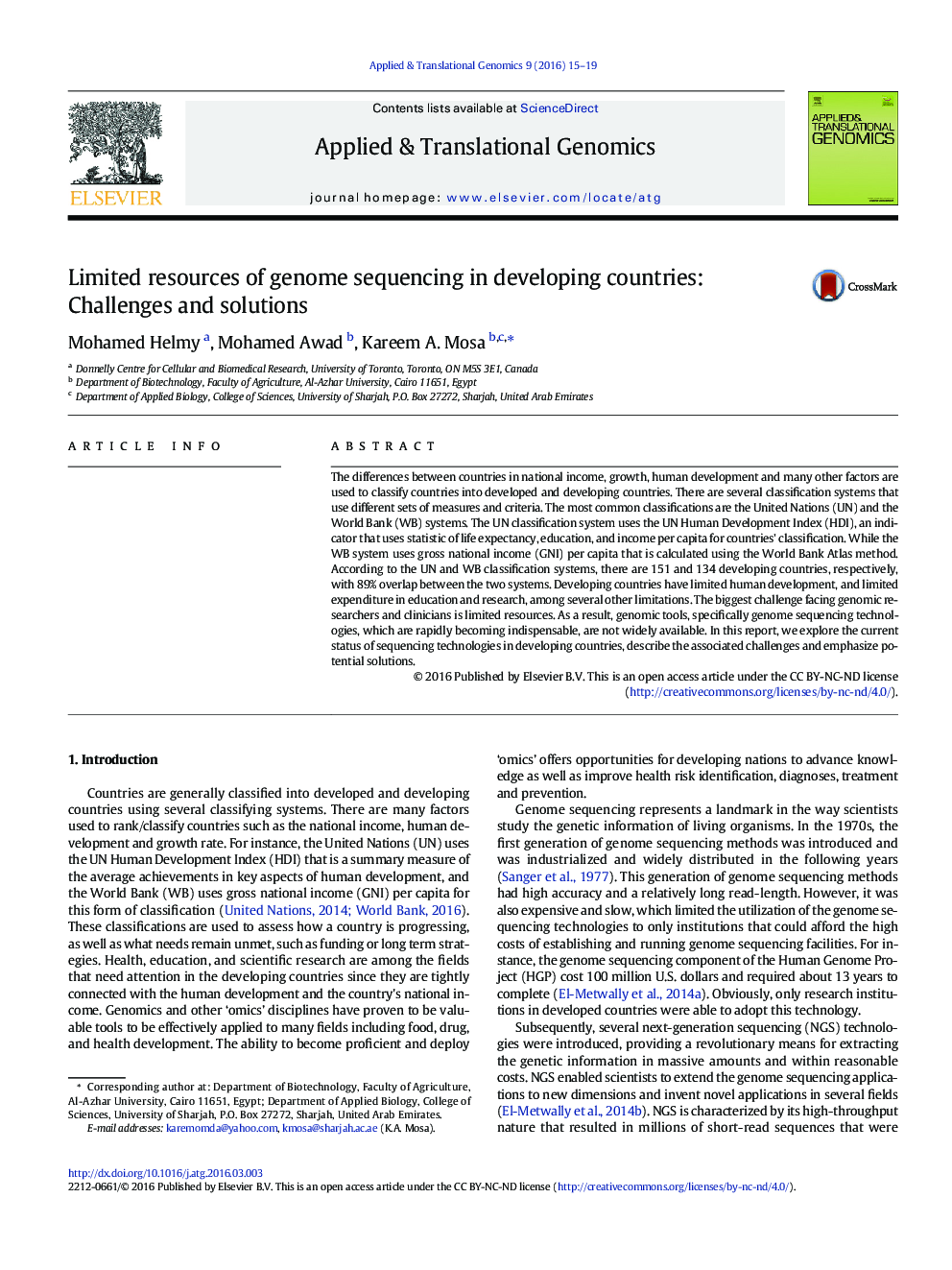| کد مقاله | کد نشریه | سال انتشار | مقاله انگلیسی | نسخه تمام متن |
|---|---|---|---|---|
| 2772894 | 1567886 | 2016 | 5 صفحه PDF | دانلود رایگان |
The differences between countries in national income, growth, human development and many other factors are used to classify countries into developed and developing countries. There are several classification systems that use different sets of measures and criteria. The most common classifications are the United Nations (UN) and the World Bank (WB) systems. The UN classification system uses the UN Human Development Index (HDI), an indicator that uses statistic of life expectancy, education, and income per capita for countries' classification. While the WB system uses gross national income (GNI) per capita that is calculated using the World Bank Atlas method. According to the UN and WB classification systems, there are 151 and 134 developing countries, respectively, with 89% overlap between the two systems. Developing countries have limited human development, and limited expenditure in education and research, among several other limitations. The biggest challenge facing genomic researchers and clinicians is limited resources. As a result, genomic tools, specifically genome sequencing technologies, which are rapidly becoming indispensable, are not widely available. In this report, we explore the current status of sequencing technologies in developing countries, describe the associated challenges and emphasize potential solutions.
Journal: Applied & Translational Genomics - Volume 9, June 2016, Pages 15–19
